Autumn is the season for Chrysanthemums, also known as Mums. There is an abundance of different varieties of Mums, blooming in a wide variety of rich, bright colors. Flowers range from small and compact to large and spidery, from delicate white blooms to densely ruffled pinks and purples. These attractive plants are truly a seasonal favorite.
Mums are readily available and easy to grow. Any Mum can be grown as an annual autumn-blooming flower, to adorn a front porch, back deck, or garden planting. They can be grown singly as an accent plant or in large colorful clusters. They can be left in their original nursery pots for a quick and easy decoration, or transferred to a planter or a spot in the yard for a more established-looking display.
Whichever color Mum you choose, and wherever you want to grow it, Mums all require similar growing conditions. Their soil should be rich, loose, and well-drained. They like their soil to be kept moist, but not wet or soggy. And they all require adequate sunlight. But how much sun to Mums really need, and what happens if they get too little or too much?
Chrysanthemums Prefer Full Sun
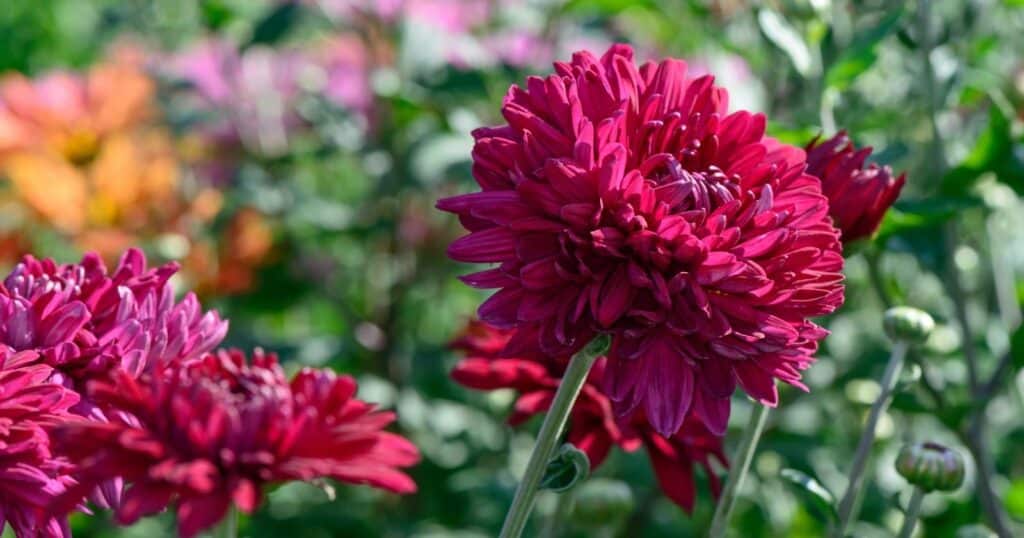
All Mums appreciate full sun to partial shade, with at least 6 hours of direct sunlight each day. If you have a sunny spot around your house, in your yard or garden, or by the mailbox, you have a place to put a Mum.
Avoid placing mums in areas with heavy shade, as they simply won’t grow well. Mums require a certain amount of bright sunlight to generate the energy they need to grow, bloom, and thrive. Without adequate sun, they will fade and die.
Mums are sun-loving perennials. Most Mums are hardy from climate zones 5-9 though some prefer the warmer climate in zones 7-9.
When buying a Mum, be aware that there are a couple of different classifications you may see: “Florist Mums” and “Garden Mums,” also sometimes called “Hardy Mums.” Knowing what you have can help you decide how and where to grow your newly acquired plants.
Florist Mums
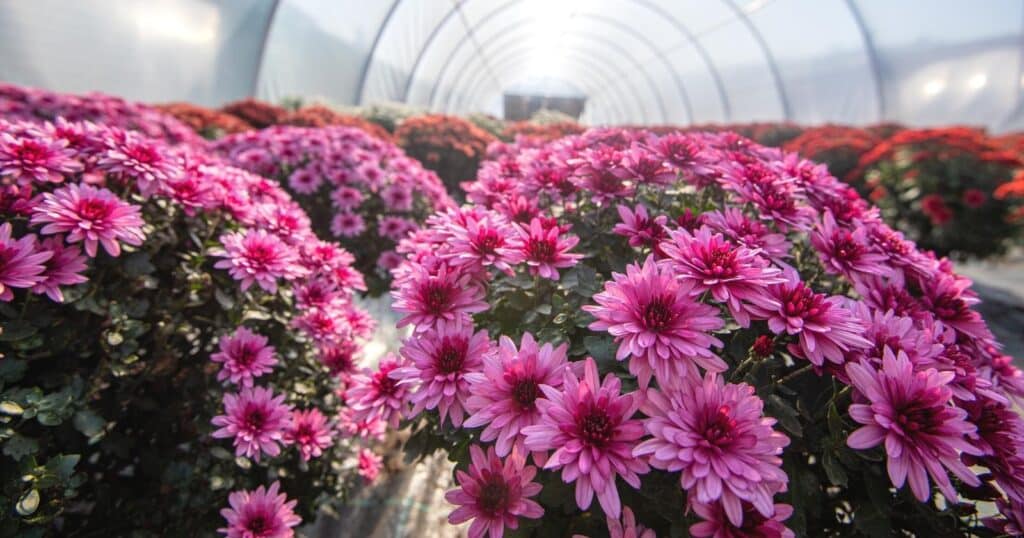
Some Mums are considered “Florist Mums” and are grown more as a houseplant than as a hardy perennial. Florist Mums are commonly sold as cheerful houseplants to brighten up the fall and winter months.
They are generally grown in smaller pots than the big outdoor Mums found at garden centers. You are most likely to encounter florist Mums indoors at a florist, gift shop, or grocery store floral department.
Florist Mums are generally enjoyed for their blooms, and then discarded when they stop blooming. While they are growing and (hopefully) blooming in your home, you can set these sweet houseplants near a sunny window. Then just water them whenever they start to get dry.
If you grow them in a fairly dark spot indoors they will do okay short-term. However, they would benefit from some longer sun exposure, as much as you are able to offer,. This will help to keep them green, healthy, and blooming.
It is, however, possible to successfully transplant these into the garden and allow them to continue growing as perennials, particularly in warmer climates. If they manage to take hold and survive their first winter outside, these plants should be treated as any other Mum, requiring a sunny spot and moist soil.
Garden Mums
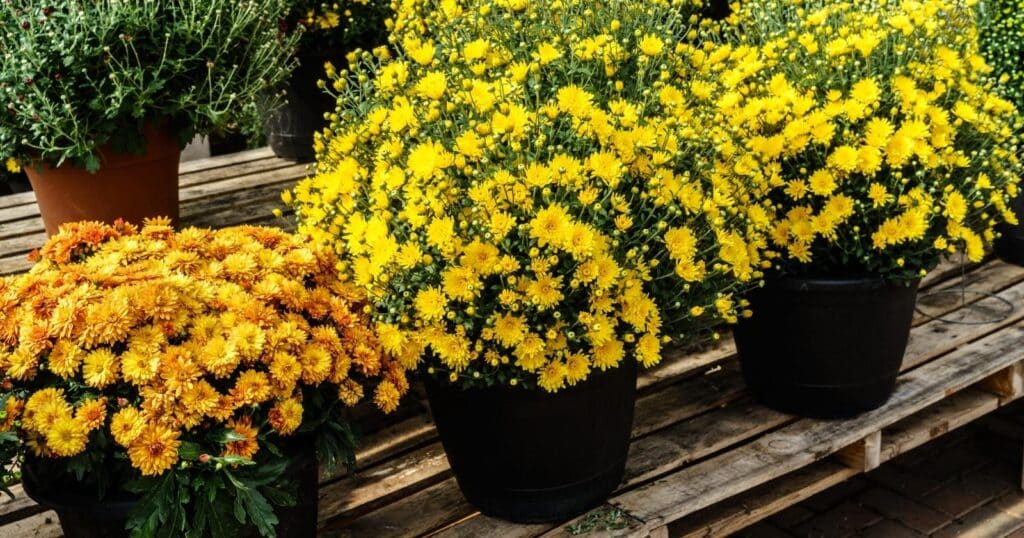
The jumbo-sized Mums found throughout the fall at garden centers, grocery stores, and farmer’s markets are sold as “Garden Mums” or “Hardy Mums.”
These garden Mums are grown and sold as hardy perennials, but are also commonly treated as annuals. If you buy potted Mums and want to use them as a seasonal outdoor decoration, you can dispose of them after they are killed by a frost.
If you buy potted garden Mums and want them to overwinter in your yard, you will want to do a little advance planning. For the best chance of overwintering success, plant them in a sunny garden spot. You’ll want to do this as soon as possible before the first fall frost.
If you buy them in autumn and allow them to bloom in their pots, it may be best to overwinter them in a protected garage and plant them out in the spring. They can stay dormant through the winter in a dark cool place where the temperature stays above freezing.
Garden Mums can be left in their nursery pots, transplanted to larger pots, transferred to large mixed planters, or grown in the garden. Wherever you put them, make sure they will get plenty of bright sunlight.
Don’t try to grow them in the shade of trees, buildings, or other tall plants, or they will struggle to reach the light and won’t grow or bloom to their full potential.
Too Much or Too Little Light
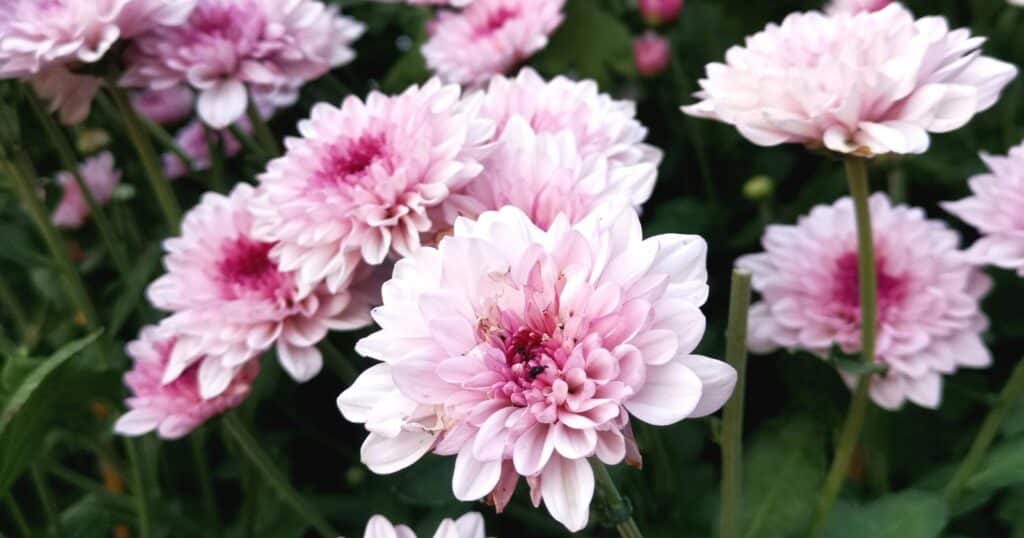
Is it possible for a Mum to get too much light? Yes, it is possible, but unlikely. If you are in a location that is hot and dry and your plant receives the full intensity of the sun for the full duration of the day, it is possible that the leaves and flowers could dry out and turn brown. This damage, however, may be as much a factor of drying out too much in the intense light as the light itself.
If your plant seems to be drying out and turning brown in full sun, first make sure to keep the roots moist. If you suspect that your Mums are turning brown in the summer because of too much direct sunlight, you may want to move them to a spot with a bit of afternoon shade during the most intense times.
In the spring and fall, it it unlikely that your plants will suffer from too much sunlight. This is simply because the light is naturally less intense at these times of year.
What happens if your Mum doesn’t get enough light? A Mum grown in the shade or with inadequate light will look weak and leggy, rather than dense and robust.
Flowers won’t be as abundant because the plant isn’t getting the sun energy that it needs to grow well. If you feel your plant isn’t growing well because it needs more sun, try to move it to a spot with a longer sun exposure.
If you move your plant to get more light or less light, it may be a week or more before you notice a difference. Plants need some time to recover, and browned or damaged leaves and flowers won’t recover.
But any new growth will indicate how well the plant is doing in its new location. Potted plants can be moved anytime it’s convenient. It’s best to transplant in-ground plants in early spring or late fall.
Wrap Up
Chrysanthemums need at least 6 hours of bright sunlight each day. With adequate sun and moist soil, Mums will put on a spectacular seasonal flower display. Check on your plants, especially potted plants, frequently so you will be aware if they seem to need extra attention.
The sooner you catch any issues and correct them, the sooner your Mums will recover. Potted plants can be easily moved to an ideal location, but planted Mums can also be transplanted if necessary. A sunny display of colorful Chrysanthemums is a fall favorite sight to see!

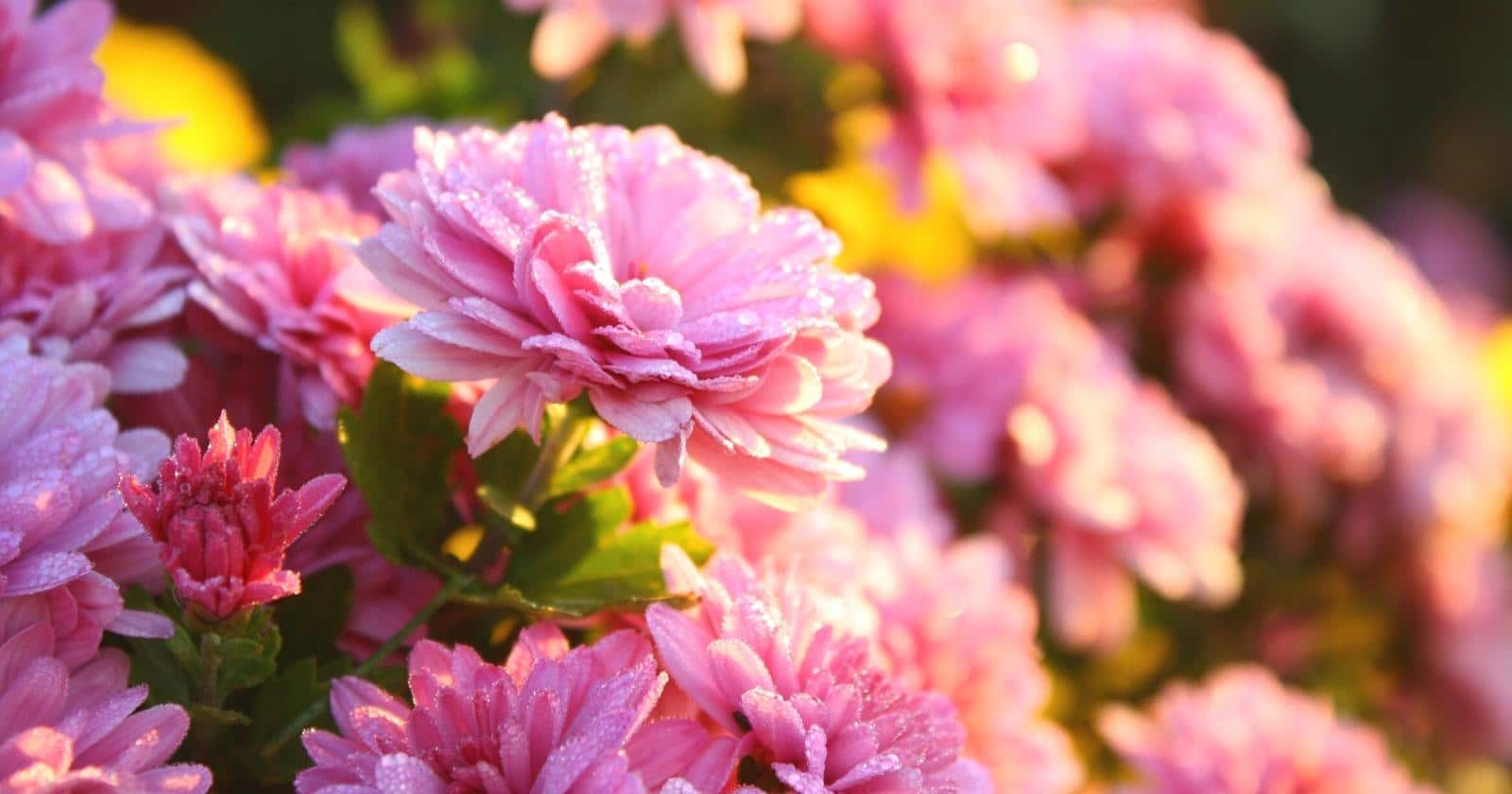
Leave a comment